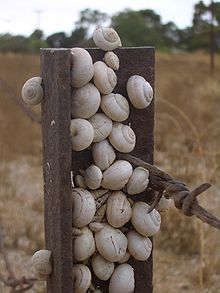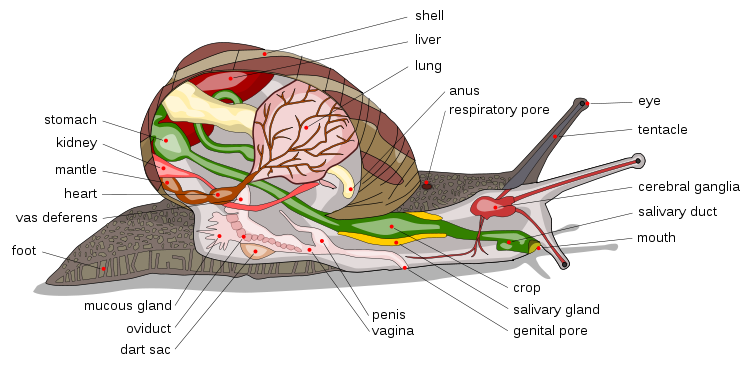Evolutionary Adaptations and Anatomy
 In
coping with the arid conditions of its habitat,
Daedalochila scintilla benefits from several key adaptations
gastropods have evolved over the millennia. Its shell for instance not only
serves as protection from
predators, but helps the snail resist desiccation. In Pulmonates, this
is done by sealing off the aperture with a layer of mucus called
an epiphragm (Thorp, 1991). This unique feature is used by snails in a process
called estivation. Estivation involves retracting the main body of the snail
up into the shell, and sealing off its aperture until environmental
conditions are more favorable (Pomeroy,
1968). This process can last months and is often used
during the summer when heat and lack of moisture can pose a threat to many
species of snails (Pomeroy,
1968).
In
coping with the arid conditions of its habitat,
Daedalochila scintilla benefits from several key adaptations
gastropods have evolved over the millennia. Its shell for instance not only
serves as protection from
predators, but helps the snail resist desiccation. In Pulmonates, this
is done by sealing off the aperture with a layer of mucus called
an epiphragm (Thorp, 1991). This unique feature is used by snails in a process
called estivation. Estivation involves retracting the main body of the snail
up into the shell, and sealing off its aperture until environmental
conditions are more favorable (Pomeroy,
1968). This process can last months and is often used
during the summer when heat and lack of moisture can pose a threat to many
species of snails (Pomeroy,
1968).
Pulmonates like Daedalochila scintilla
lack gills instead having shaped their mantle cavities into a lung
(Washington State University, 2012). Land snails have also evolved to have the opening of the anus at
the front of mantle through an adaptation known as torsion (Morton, 1958). While
having an anal opening near the respiratory opening can lead to some
problems, the advantage of having opening on only one side seems to have won
out over time in this evolutionary battle.
